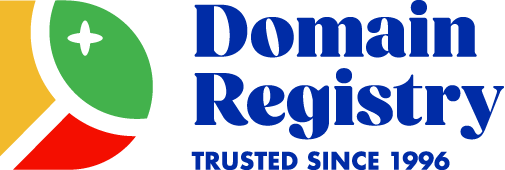If you’ve purchased a domain and set up your website, your next step to success is Search Engine Optimization, or SEO. Because what’s the point of creating a fancy, user-friendly website full of great content if no one can find it?
SEO is essentially the process of tweaking and tuning your website’s visibility on search engines like Google and Bing, making it easier for your audience to find your content online, right when they need it.
While mastering SEO is an ongoing process, you don’t have to wait to start optimizing your site. Let’s dive in!
Use keywords for SEO
What are keywords and keyword phrases?
Keywords are at the heart of SEO. These single words or phrases describe the main topic of a piece of content. They’re the terms your audience uses to search for products, services, or information online. For example, “SEO” is a keyword, and “SEO for beginners” is a keyword phrase, targeting a more specific query. Longer and even more precise, long-tail keywords like “advanced SEO strategies for business owners” cater to niche interests, aligning more closely with searcher’s intentions.
Keep in mind, keywords cast a wide net to attract a broad audience, while keyphrases and long-tail keywords target specific needs. Using a mix can enhance your visibility across a range of searches.
Identify your keywords
Determining the right keywords for your website involves understanding your audience and offerings. Think about the words your audience might use to find your services or content. What questions might they have? How would they describe their needs? By tapping into your audience’s perspective, you can tailor keywords to match their search queries.
It’s also helpful to look at competitors’ websites and notice the keywords they seem to use. Exploring several sites can give you good a good sense of effective keywords. Make a list of broad terms and specific phrases that resonate with your core offerings—these are your potential keywords!
Use keyword tools
To further uncover the golden phrases your audience searches for, check out Google Keyword Planner, Semrush, and Ahrefs. These are just a few specialized SEO tools that let you see not just what people are searching for but also how competitive those search terms are. You’ll get a clearer picture of your keywords’ potential impact with lots of data points on each one. And if you move on to more advanced SEO tools down the road, you’ll have a greater understanding of your keyword strategy, making your efforts more targeted and effective.
Implement keywords on your website
Once you’ve identified your keywords, it’s time to weave them into your website. This includes placing them in your page titles, URLs, headlines, and even image descriptions. However, you want to avoid “keyword stuffing.” Cramming too many keywords into your content and can actually harm your SEO. This practice can trigger search engine penalties for web spam, and it makes things harder to read. Instead, sprinkle keywords throughout your content naturally. Think of keywords as the spice to your website—use them to enhance, not overpower.
Do I need keywords in my domain name?
Including keywords in your domain name can have both SEO and branding benefits. If you domain name reflects your site’s content, it not only helps search engines understand your niche but also makes your site instantly recognizable to potential visitors. This clarity can boost your search relevance. Also, a keyword-rich domain name can improve brand recall, helping to communicate your offering or industry focus.
But keywords alone (no matter where you use them) won’t guarantee high search rankings or user engagement. The real strength of your online presence is built on strong SEO strategy, a smooth user experience, and top-notch content.
Create high-quality content
Keep it real
Authenticity is key. This means prioritizing readability and usability for your audience over writing for search engines. You should focus on creating authoritative, relevant content that serves a purpose, rather than over-optimizing your content just for SEO.
The primary goal is to provide value to your readers. For example, if you’re writing a blog post on the “benefits of a daily yoga practice,” make sure it’s informative, well-researched, and enjoyable to read. Search engines are intelligent and won’t index a page favorably simply because it contains a keyword a zillion times. As the saying goes, “content is king.” Being real is always a winning SEO strategy to attract and retain visitors.
Optimize images for SEO
Images aren’t just visual aids. They’re also opportunities for optimization. By ensuring your images and video tags are descriptive and include keywords, you can improve your site’s SEO. Plus, optimized images load faster, enhancing user experience—a factor that search engines consider when ranking sites.
Instead of using generic file names like “IMG_005.jpg”, rename your images to tell search engines exactly what the image depicts. For example, a file name like “yoga-bridge-pose.jpg” can offer more clarity and relevance to your content.
Also, implementing alternative text (alt text) can provide even better context to search engines. This is a textual description of an image for accessibility purposes and when images can’t be displayed. Most Content Management Systems (CMS) like WordPress, Shopify, or Wix, provide a specific field to enter alt text when you upload an image. Sticking to our yoga example, alt text for an image might read “young woman in yoga bridge pose on Alki Beach.” Be sure to include alt text that’s concise and descriptive for every image you use on your website.
Use links wisely
In the digital world, links acts like endorsements, signaling trust and authority to both your readers and search engines. That’s why incorporating links to reputable sources can potentially elevate your content’s value in the eyes of search engine algorithms. Good outbound linkage can underscore the credibility and depth of your research, and earning “backlinks” from respected websites can also amplify your site’s SEO potential.
Optimizing your link text with descriptive phrases gives your readers and search engines alike clearer guidance, enhancing both user experience and SEO. For example, replacing vague link messaging like “click here” with more specific wording like “explore our yoga pose guide” can significantly boost the link’s value, making your content more accessible and informative.
Now, let’s say you’ve already written a ton of content about a topic. Adding internal links to your own existing posts and pages is another good practice. It not only helps readers navigate your site, but it helps search engines index and conceptualize your pages. For example, we can point you to more useful info on this site like this: Check out our blog Dot Talk. (See what we did there?)
SEO is never done—get started now!
SEO may seem daunting at first, but starting with these basic practices can help you lay a solid foundation for your site’s online visibility. Remember, SEO is more of a marathon than a sprint. Your best tools for success are consistency, patience, and a willingness to learn and adapt.
For more insights, consider resources like Google’s Search Engine Optimization (SEO) Starter Guide or Semrush’s SEO Basics: How to Do SEO for Beginners. With time and effort, you’ll ensure your website not only reaches but resonates with your intended audience. As you grow more comfortable with the basics, explore more advanced SEO strategies to elevate your site’s ranking.
Happy optimizing!




